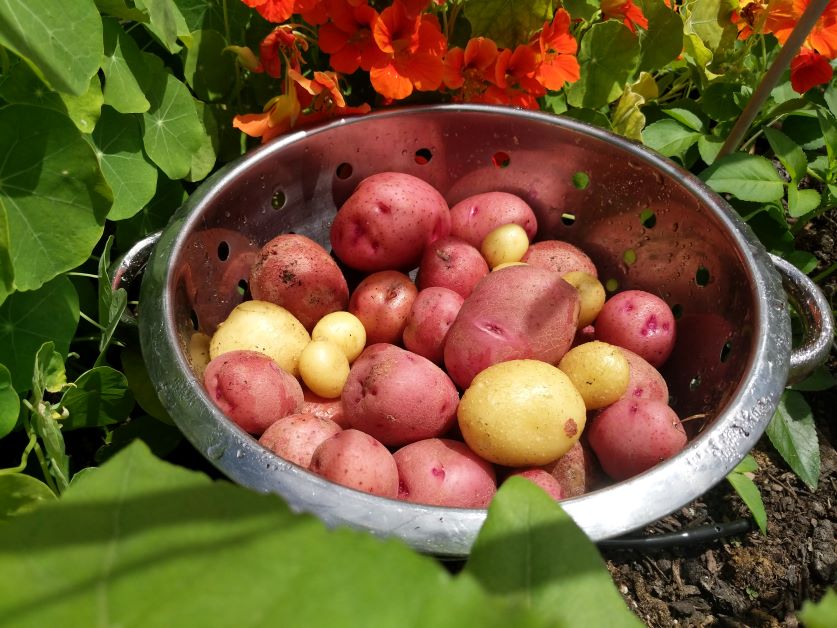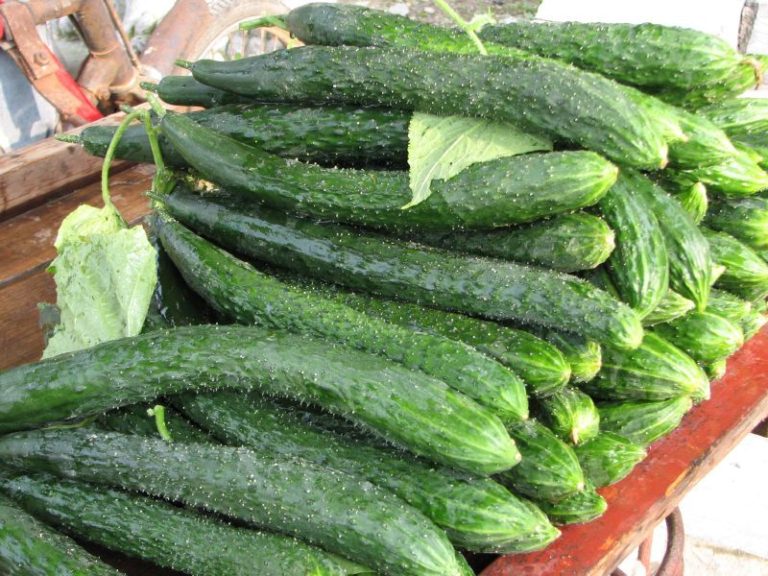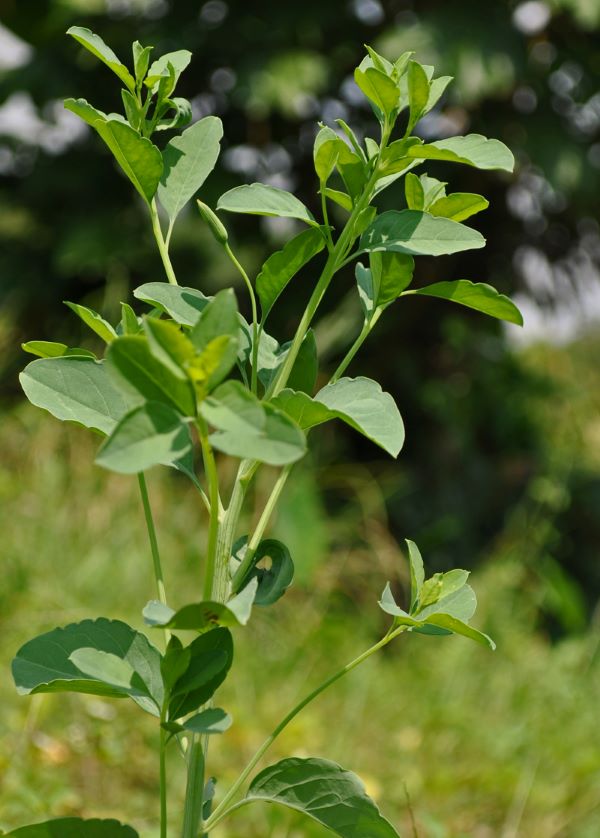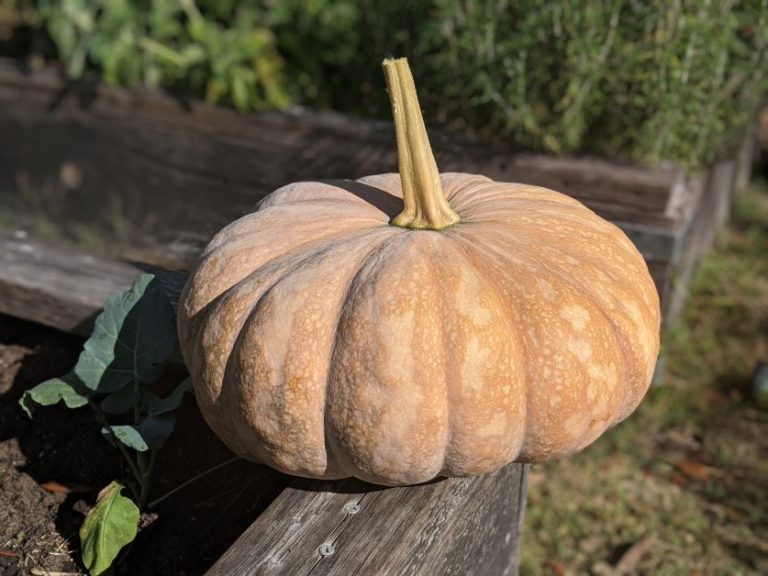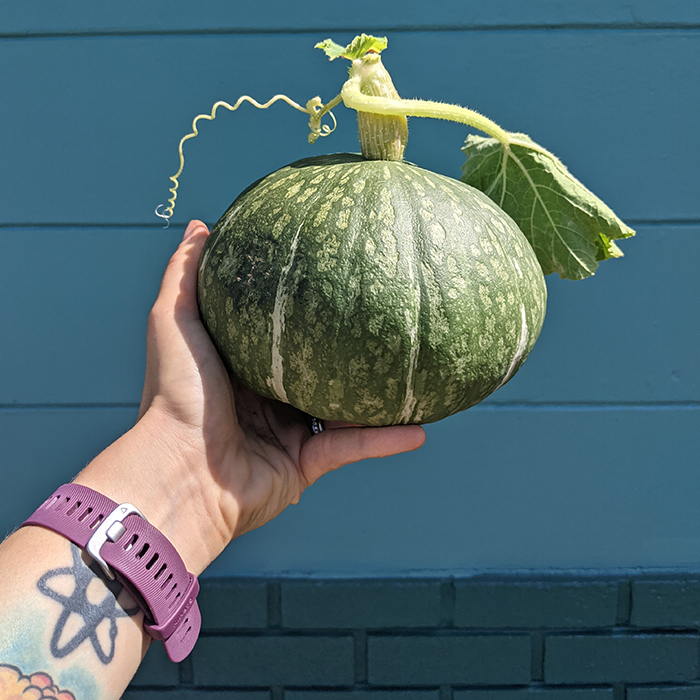Growing Potatoes in Florida
When you think of Florida, do potatoes come to mind? Probably not. In truth, growing potatoes in Florida isn’t hard to do as long as you plant the right variety at the right time of year.
From seed to harvest, learn how to grow potatoes in Florida with the comprehensive growing guide.
When to plant potatoes in Florida
Unlike the heat-loving sweet potato, Irish potatoes grow better in cooler, drier weather.
[table id=27 /]
Best potato varieties for Florida
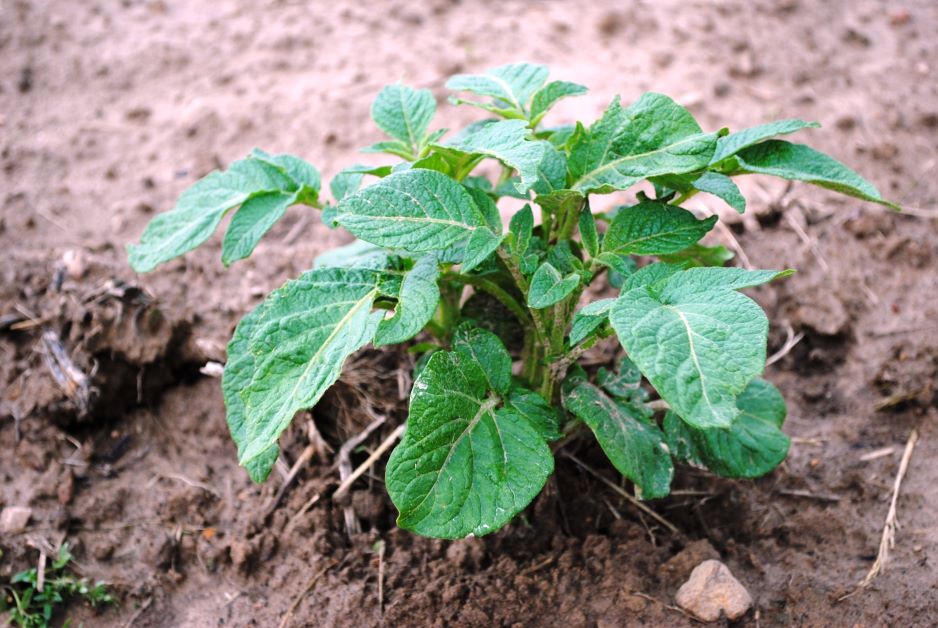
The best potato varieties for Florida are ones that mature early. The longer your potato is in the ground, the more likely pests or disease will attack it.
Fun fact! Potatoes are a relative to tomatoes, peppers, and eggplants!
Best red potatoes for Florida
- Red Pontiac
- Red LaSoda
- Red LaRouge
Best white potatoes for Florida
- Yukon gold
- Sebago
- Gold Rush
- LaChipper
Best russet potato for Florida
- Norkotah
How to plant potatoes in Florida
(Optional) Store your seed potatoes in a cool dark place until they start to grow a lot of eyes (also called chits). I keep mine in an open egg container in my closet.
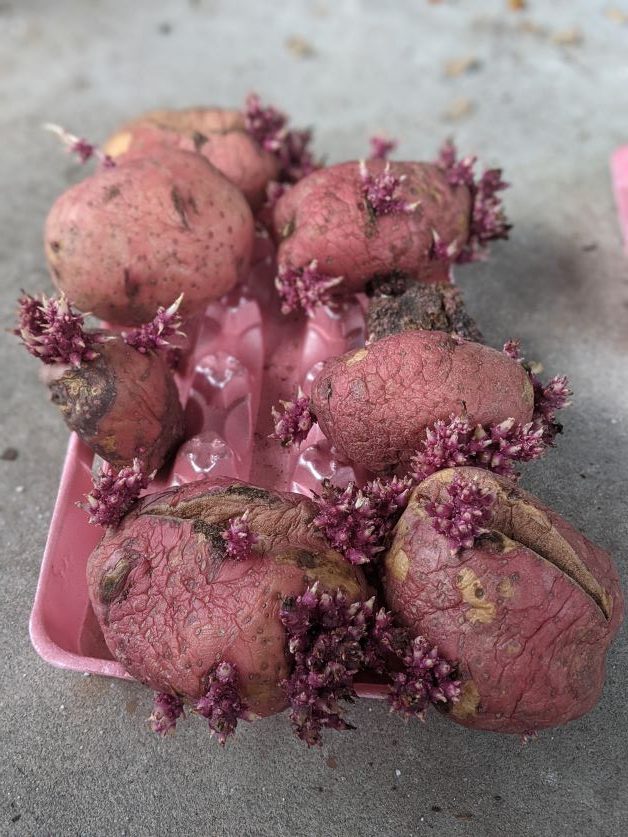
If your seed potatoes are bigger than 1 ½ inch in diameter, cut them into 1 ½ inch chunks. Each seed piece needs to have at least 1 eye to grow, but the more eyes the better.
Set any cut seed potatoes aside for 2 or 3 days to allow the cut parts to heal over.
Plant your potato seeds 5 inches deep and keep the cut side facing down. Plant your seeds 1 foot apart in rows 3 feet apart.
Cover your seeds in 4 more inches of soil or compost.
When your plant is about 6 inches tall, add more soil to cover your plant all the way up to the topmost leaves. This is called hilling, and your potatoes will grow along your potato stem inside those hills. Repeat this step once more when your plant grows another 6 inches.
If you see exposed potatoes, you need to add more soil to your hills. Potatoes that see too much sunlight will turn green and become poisonous.
Soil can wash or blow away over time, so check your potatoes often and add soil as needed. If you are having trouble keeping your soil in place, you may want to box your potato plot in using a DIY garden fence, wood frame, bricks, or cinder blocks.
Growing potatoes in Florida
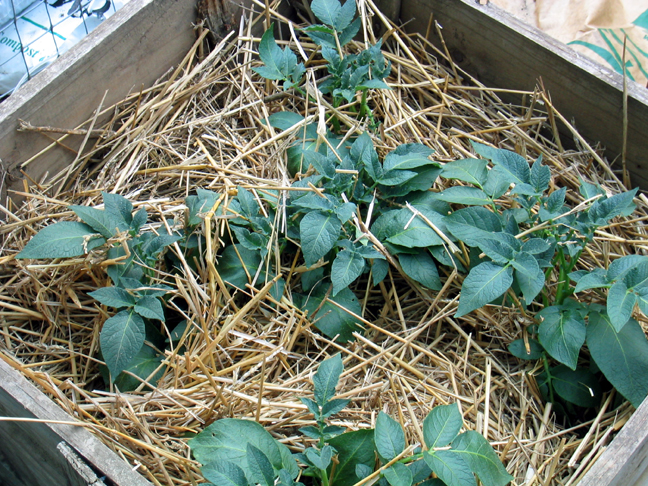
Light
Potatoes are a full sun plant and need at least 6 hours of light a day.
Temperature
The ideal temperature range for growing potatoes is 68°F to 77°F. 80°F+ temperatures will slow potato growth and 90°F can stop potatoes from growing altogether…so don’t plant potatoes during the Florida summer.
Soil
The type of soil you use is very important when growing potatoes. Potatoes need loose soil in order to develop. If your soil is too compact, your potatoes will struggle to form and will end up misshapen and small. Sandy, well-draining soil with a pH of 6 to 6.5 is best.
Water
How much you water your potatoes depends on what stage of the growing process they’re in. When your potato plants are still green and growing, they need a moderate amount of water at 1 to 2 inches per week. You’ll need to soak your potato plants once or twice a week, depending on how hot or rainy It is. When your potato plants start dying back, you should stop watering them altogether.
Fertilizer
Amend your soil with oak leaf compost 2 weeks before planting. After planting your potatoes, feed them an organic fertilizer that’s lower in nitrogen once a month, such as 5-10-10.
Harvesting and Curing
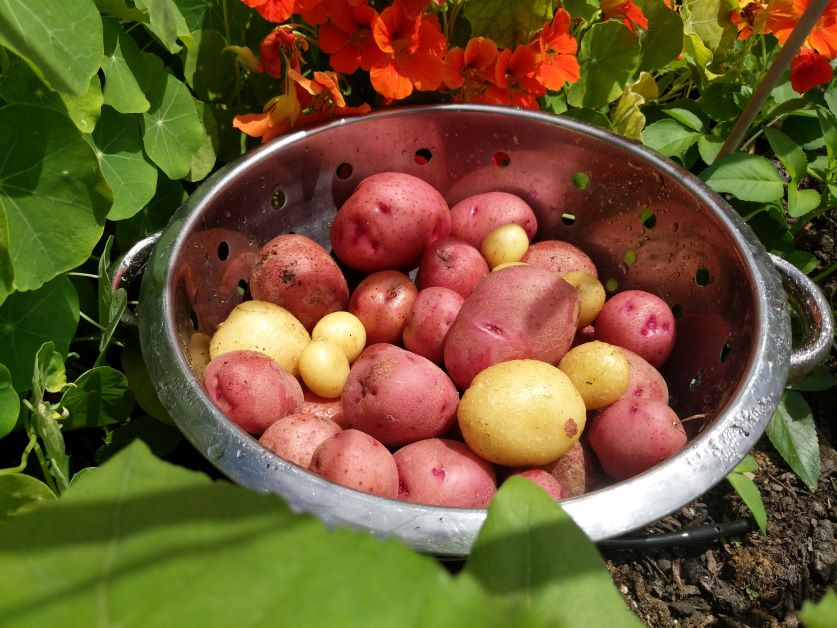
Don’t panic when your potato plants start to die – this is a natural part of the potato growing process. When your plants have flowered and look dead, that’s when you know your potatoes are ready to dig.
Potatoes can take 60 to 120 days to grow, but it depends on the variety.
You can harvest your potatoes early, otherwise known as “new potatoes,” or you can let them fully mature. New potatoes have thin, tender skin and should be eaten within a week. New potatoes don’t need to be cured.
Mature potatoes, on the other hand, do need to be cured before they’re stored. Put your unwashed, mature potatoes in a dark, dry location that’s between 60°F and 65°F. Keep them there for 10 days.
After 10 days, dust off excessive dirt but don’t wash your potatoes until you’re ready to use them. Throw away any rotted or wrinkly potatoes and store the rest in your refrigerator or anywhere else that is cool and dark.
Growing potatoes in Florida in containers
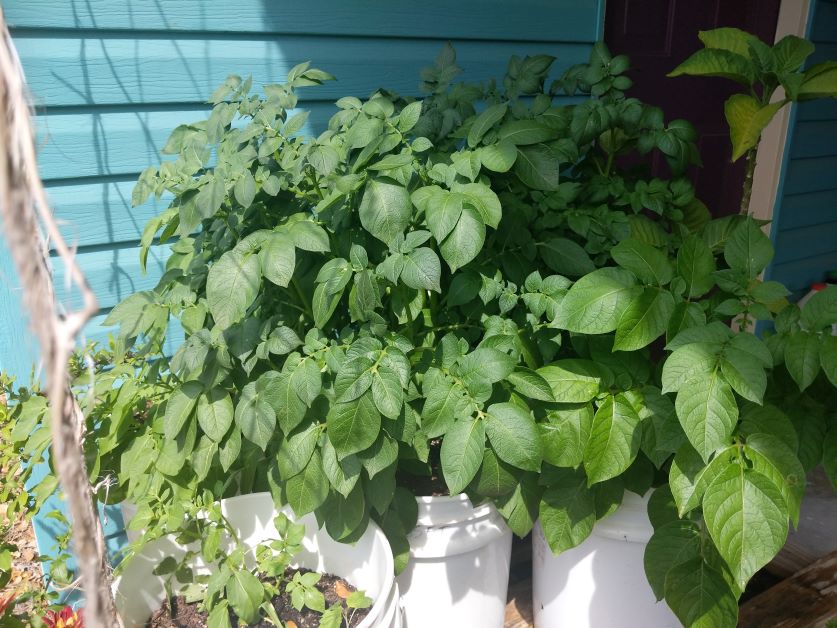
Growing potatoes in Florida in containers is a great way for gardeners to grow potatoes if they don’t have a lot of space. You should know, though, that your yield will be smaller if growing potatoes in containers rather than in the ground.
When you grow potatoes in containers, you need to use a container that’s deep. 5-gallon buckets work great and you can sometimes get them for free from the grocery store. Commercial frosting sometimes comes in 5-gallon buckets, so ask the bakery department if they have any empty buckets they’re planning on throwing away.
If you do decide to grow potatoes in buckets, it’s REALLY important that you make sure the bucket is food grade. If you use a non-food grade bucket, it may leach harmful chemicals into your potatoes.
To get the biggest harvest, you may want to use an indeterminate variety when growing potatoes in buckets. Kennebec, red pontiac, Lehigh, russet Burbank, and strawberry paw are all indeterminate, making them a good choice for bucket potatoes.
Materials:
- 5-gallon food grade buckets
- Automatic drill
- Wide drill bit (7/8 or bigger)
- Seed potatoes
- Topsoil
- Peat
- Black Kow manure
- Organic bone meal
- Water wand
- Mulch
- Tarp
How to grow potatoes in buckets:
Using a 7/8 size drill bit, drill several drainage holes into the bottom of your bucket. If your bucket doesn’t drain well enough your potatoes will rot – aim for 5 or more holes.
Mix equal parts topsoil, peat, and Black Kow manure.
Fill your buckets about 1/3 of the way with your soil mixture.
Place your seed potato on top of the soil.
Fill the rest of the bucket 2/3 of the way up with more soil. You should now have 1/3 of empty space from the soil line to the top of your bucket.
Put your buckets in a spot where they get plenty of sunshine. If you can, keep your buckets on a pallet instead of directly on the ground. Keeping your bucket on the ground will hinder drainage and make it harder for pests to get inside.
Water your bucket thoroughly.
Sprinkle a thin layer of organic bone meal on the top of your soil and water it in.
Generally, bucket potatoes need to be watered more often than potatoes in the ground. How often you water depends on the weather. If it’s especially hot and dry, you may need to water them every 2 or 3 days. Take care not to overwater to prevent your potatoes from rotting. Stick your finger into the soil and if it’s dry up until your second knuckle, it’s time to water. Use a water wand to avoid getting water on the leaves.
After a few weeks, you should see leaves starting to develop above the soil line. Let them grow until they reach the top of your bucket.

Once your stems and leaves reach above the top of your bucket, fill the rest of the bucket with soil. Leave about an inch of space between your soil and the rim of the bucket and be careful not to break the stems.
Fill that last inch of space with mulch.
Potatoes usually take 60 to 120 days to be ready for harvest, but it depends on the variety. Potatoes are ready to pick after they’ve flowered when the leaves are yellow and have died back.
When you’re ready to harvest, lay down a tarp and dump your buckets out on top of it. Pick through the soil and pull out any potatoes you find. I usually reuse the soil but throwing into other garden beds.
If you’re not planning on eating your potatoes right away, cure them.
Can you grow potatoes from grocery store potatoes?
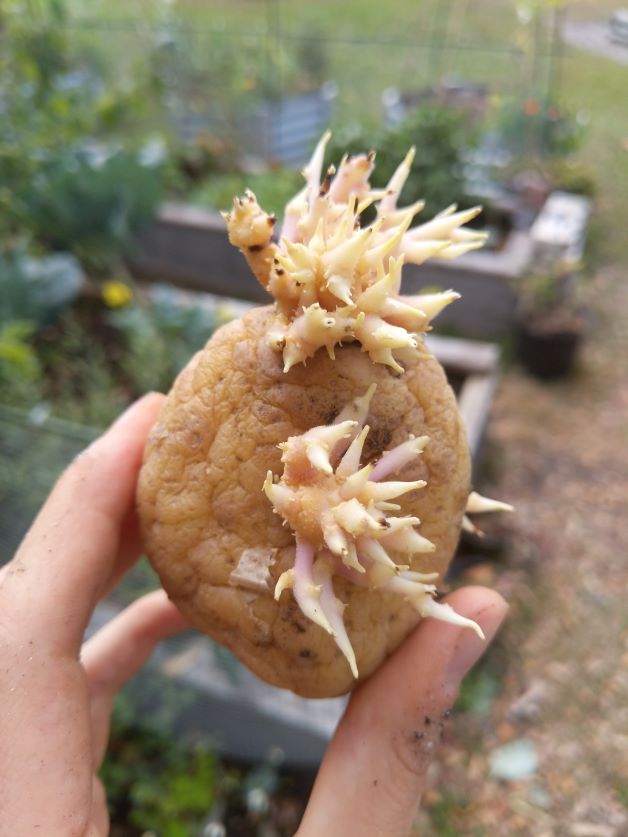
The answer is: not always. The first time I tried to grow potatoes in Florida, I planted some grocery store potatoes in a bucket but instead of growing, they rotted. I suspect the culprit behind my failure was growth inhibitor.
Some commercial potato farmers spray their crop with growth inhibitor. This stops your potatoes from growing eyes. Those eyes, however, make your potato grow into a plant that produces more potatoes. No eyes, no potato plant. I didn’t make sure that my potatoes had eyes before trying to re-grow them, and the potatoes probably couldn’t regrow in the first place.
To avoid the disappointment of rotted potatoes, you should plant seed potatoes. Seed potatoes look like regular potatoes, but they’re exactly what they sound like – potato seeds. These heirloom potatoes were harvested and sold for planting rather than eating.

